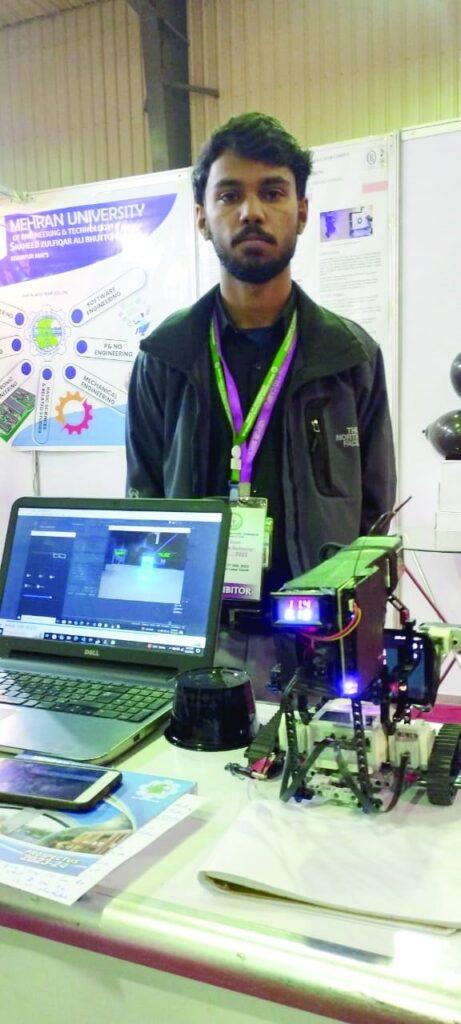KARACHI:
Artificial intelligence is the new buzzword in today’s technological world. It is rapidly changing the world we knew until now. Last week, the Indian military introduced its four-legged, AI-powered robots, which were proudly displayed as part of their Army Day parade in the city of Pune. Called MULES (Multi-Utility Legged Equipment) and designed to look like dogs, these “AI dogs” will be used for surveillance as well as carrying light loads.
Over in Karachi, university students have unveiled an AI-powered robotic vehicle designed to improve Pakistan’s defense capabilities.
Equipped with an advanced laser gun capable of incinerating targets in seconds, this next-generation system promises to revolutionize military operations while minimizing both costs and casualties.
The AI-powered robo-vehicle, currently in prototype form, has been developed to minimize casualties among security personnel by offering a safer and more effective alternative to traditional combat methods.
Its ability to distinguish between friendly and enemy forces, along with its precise targeting of both moving and stationary targets – on land and in the air – demonstrates impressive accuracy and effectiveness.
The developers of the robo-vehicle, students from Mehran University of Engineering & Technology, Shaheed Zulfiqar Ali Bhutto Campus in Khairpur, proudly displayed their product at the 4th Research and Technology Showcase at the Karachi Expo Centre, where it caught everyone’s attention, including the Sindh Chief Minister , who appreciated the project as a leap forward in defense technology.
Four developed nations – Israel, US, UK and South Korea – have already incorporated similar technology into their defense systems and if implemented, Pakistan would become the first country in the Islamic world to implement such technology and place it as the 5th nation globally to do so.
Syed Owais Ahmed, a student from MUET’s Department of Electronics at Khairpur Campus, explained that the robotic laser gun prototype offers an alternative to conventional ballistic weapons. One of the biggest advantages of this system is its ability to fire laser beams at the speed of light, eliminating the need for traditional ammunition. Powered by a hybrid electric setup, the system ensures an unlimited supply of “ammunition”, making it extremely reliable in combat situations. Furthermore, this innovation can reduce the risk of injury by enabling remote control of the system from a secure workstation.
The prototype is equipped with high-tech features including cameras, infrared sensors and a variety of lenses to enhance its targeting capabilities. Currently, the system can target objects up to six feet away, but the range can be extended with additional modules. This could potentially enable the system to disable enemy missiles in the air during an air strike.
The students and faculty behind this project are eager to contribute their expertise to strengthen the country’s defense capability. In addition to providing increased security, this technology can lower defense costs by reducing reliance on conventional munitions and personnel in dangerous combat situations. This technological marvel – once seen as the realm of science fiction – now stands as a testament to the ingenuity and determination of Sindh’s brightest minds.



